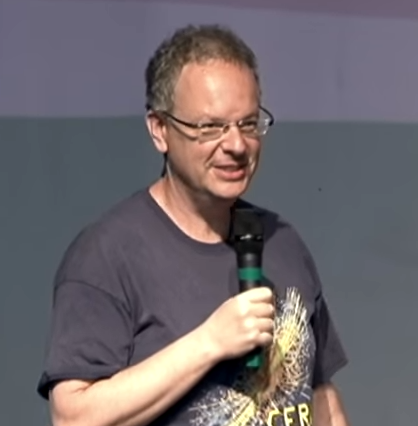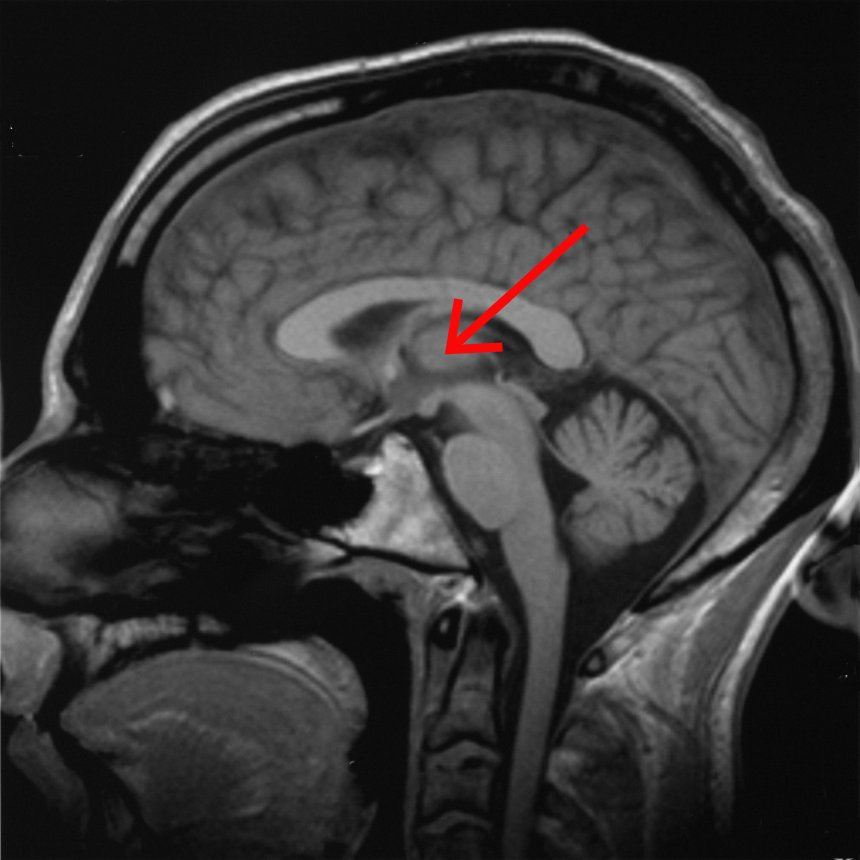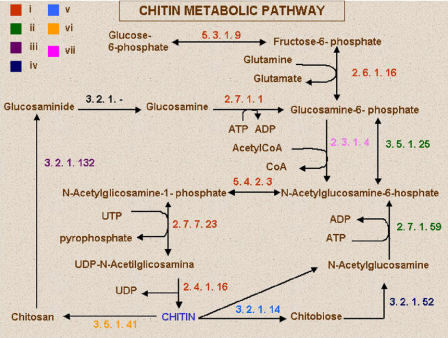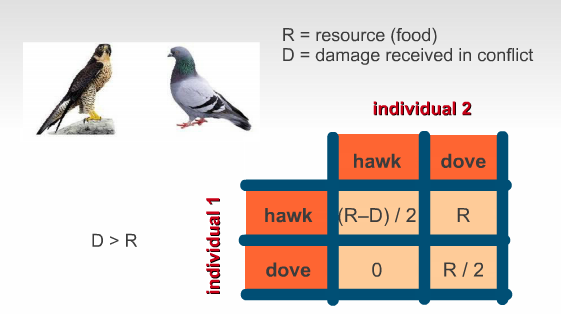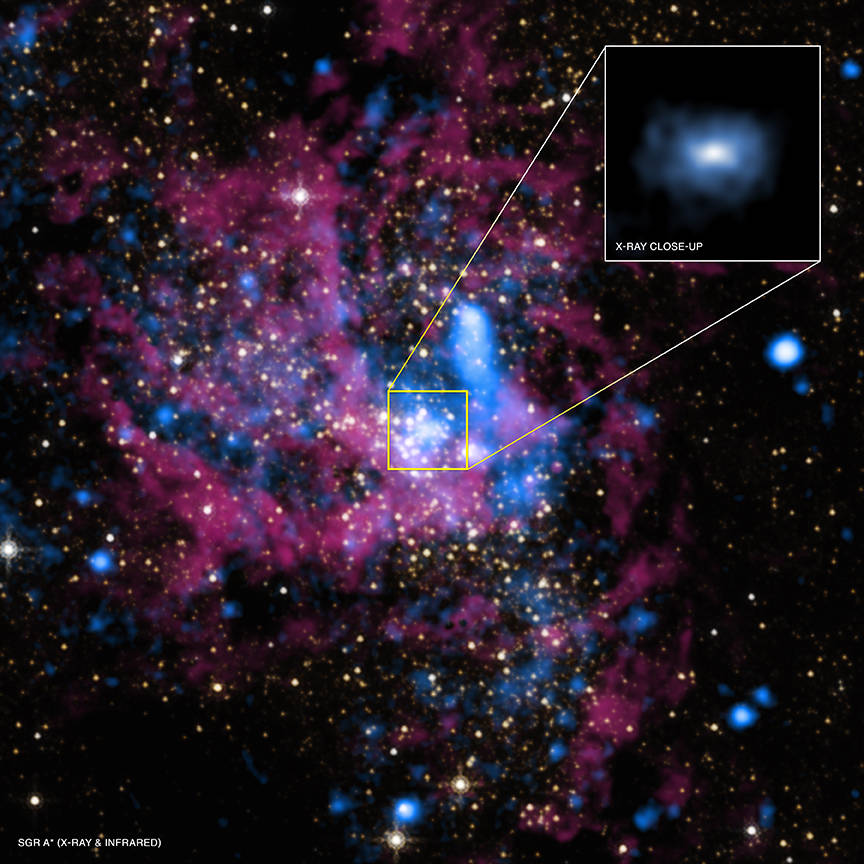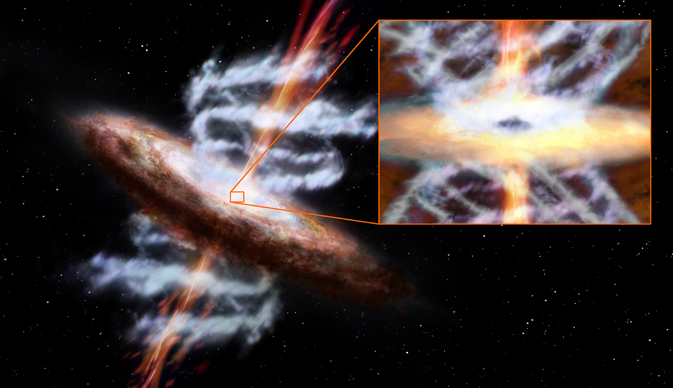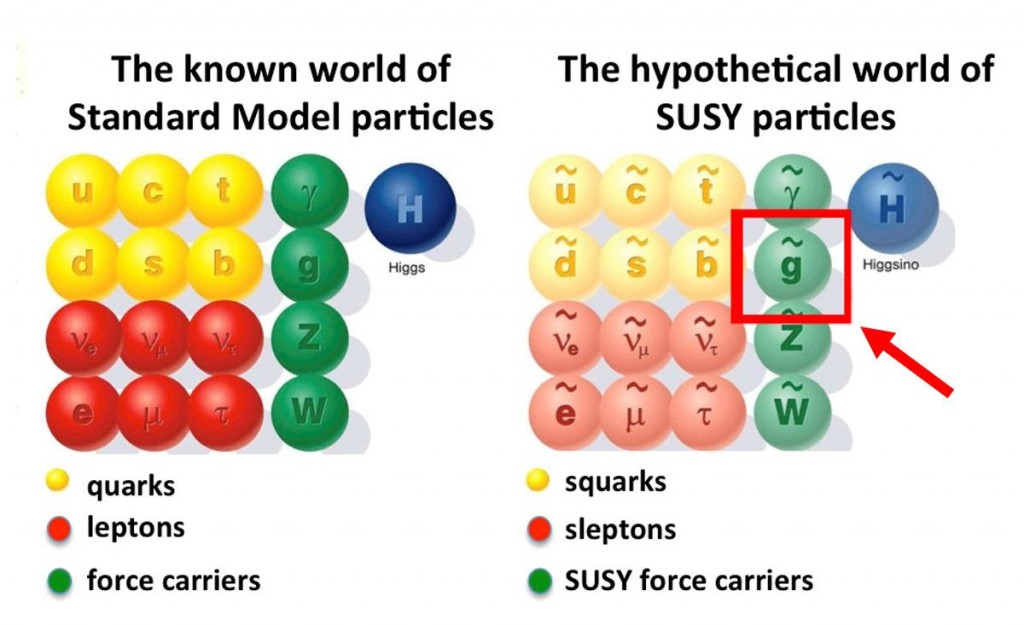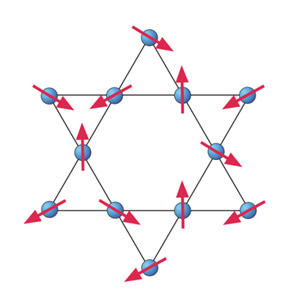Ever wondered what it is like to study some of the Universe’s most dramatic events?
Raised in a ‘post-Sputnik era’ within a general atmosphere of awareness of the importance of science, professor John Friedmann became interested in science (and physics) during high school. In college, he realised there were several unexplained mysteries about the Universe, powered by the advances and discoveries of satellites, that pointed towards general relativity (GR). Despite the skepticism of some astronomers to GR, and keen to understand more, he got into the small group of physicists studying the new field of relativistic astrophysics in the late 60’s – to live what turned out to be the ‘golden age of black holes and neutron stars’.
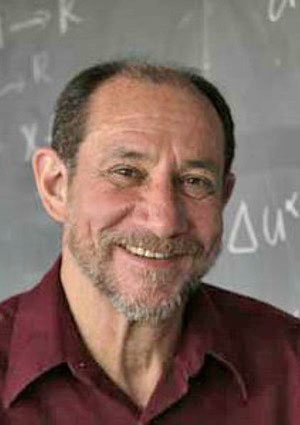
John Friedman holds the position of University Distinguished Professor Emeritus at the University of Wisconsin-Milwaukee (USA).
Nowadays, John Friedman holds the position of University Distinguished Professor Emeritus at the University of Wisconsin-Milwaukee (USA). Fellow of the American Physical Society, he has worked on a broad range of problems in gravitational physics and relativistic astrophysics, involving neutron stars, black holes, gravitational waves, topology of spacetime, and topological questions in quantum gravity. The professor attended the ‘One-day Relativity Workshop’ at ICTP-SAIFR in November and took some time after the event to talk to us.
You were supervised by Prof. Chandrasekhar during your PhD. Later, he was awarded a Nobel Prize for his work on structure and evolution of stars. I’m very curious… What was it like to work with a Nobel laureate?
Well, he had a lot of insight into what the right problems were to look at. He came to General Relativity with a background in astrophysics – he was one of the country’s leading astrophysicists. He recognized the importance of looking at stability of black holes; eventually he did the first calculations of black hole normal mode frequencies. His real strength was his ability to see the structure in the equations that govern the physics he was looking at. He was a throwback to classical physics of fifty years earlier but he assimilated many of the modern techniques. He was unusual, in his day, for manipulating long equations rather than relying on short calculations and physical insight.
What is General Relativity and how did it change Physics in the last century?
General relativity is Einstein’s law of gravity that tells you that gravity is equivalent to a curvature of spacetime and that particles travel paths of the shortest length in spacetime. People draw pictures where you see space curved like a rubber sheet with a ball placed on it – that conveys some of the feeling for it. But the importance of the theory, in astronomy, is not really this geometric meaning of spacetime, it’s what it [the theory] predicts for what you see in the Universe. Its predictions of black holes, the description of how the Universe expands, of the nature of the densest stars – neutron stars – and the description of the most energetic events in the Universe – the collision and coalescence of black holes and the coalescence of neutron stars and neutron stars and black holes. It [the theory] is needed to predict and understand the most exciting events that are occurring in the Universe.
You study some of these events, like neutron stars! What are they and why are they important? You were talking about coalescence of neutron stars… What happens when two neutron stars fuse together?
At the end of the life of a massive star – let’s say between 8 and 20 times the mass of the Sun – the core of the star is [made of] the stablest element – iron. You don’t form anything heavier than iron [inside the star] and, as the star burns its nuclear fuel outside the core, you just keep adding ashes to the dead iron core and its mass keeps growing. The star is sustained by the pressure of the core’s electrons, [where] the electrons have to move faster and faster, to keep the core apart – to counteract its gravity.
As [the core] is growing larger, its gravity is increasing and the electrons have to move faster. But there’s an upper limit on how fast they [the electrons] can move – that’s the speed of light!!. Once the core gets above 1.5x the mass of the sun, the electrons would have to go faster than light. So at, or shortly before, that upper limit the electrons are all pushed down onto their nuclei and they turn into neutrons – an electron + a proton = a neutron – and the entire star collapses down to a giant nucleus.
It’s a gigantic nucleus – the Universe largest atomic nucleus: [there are] 1 with 57 zeros neutrons inside of it! Nuclear density is about 1 billion tons per teaspoon – in natural units. The inside of that star is even denser than nuclear density – it’s the densest matter of the Universe, with an average density of 3 billion tons per teaspoon – and it provides a way of trying to understand how matter behaves at the highests densities in the Universe.
That’s part of its importance for physics, and neutron stars also have the Universe’s largest magnetic fields and they serve as the end of evolution for a whole class of stars. The galaxy is dotted with thousands of neutron stars. [Finally,] the coalescence of neutron stars or neutron stars and black holes gives you the most energetic, most luminous, electromagnetically observed events in the Universe.
“We are all made of stardust” as Carl Sagan would say. What does that mean and how does that relate to your work?
That’s the statement that basically everything in you, every element, every atom – except for hydrogen and helium – was forged, in one way or another, by stars. Every element, including hydrogen and helium in you, was once inside a star. In that sense, you literally are stardust. Some heavier elements in you – lithium, carbon, nitrogen, oxygen – those elements are all forged in stars and distributed through the Universe. [That happens] either the stars blow off their masses (when they’re heavy) or in supernova explosions. But the heaviest elements – rare earth elements, gold, silver, platinum, lead, uranium – these elements, it looks now like – from work of the last 10 years and the most recent discovery of two neutron stars colliding with each other – [they] were formed in the collisions of neutron stars, or perhaps between neutron star and black hole. Finding out the way in which they form, the way that which these collisions occur, and doing the observations and understanding those, it is in part related to the work I’m doing.
Everybody tells us about nucleosynthesis and how the elements are formed… but they only tell us up until iron. And we see a lot of other elements out there! And I always wondered ‘what about all the other stuff… how do they form?’. But it is a great question people are still trying to figure out, right?
Yeah, right! It looks like we’ve got the answer, but still… you can’t say it’s really decided by one event. It looks increasingly likely that we know the answer, at least for the major part of where they formed, but I’m sure in 10 years there will be others! Nucleosynthesis [the process by which atomic nuclei are formed] has not turned out to be a simple field, there are always exceptions, there are always different mechanisms – there’s cosmic rays hitting, spallation by cosmic rays, there’s just a bunch of mechanisms! It’s like saying “how do you form CO2?”. Well, there’s not gonna be one place in the Universe where you form carbon dioxide! I’m sure smaller amounts will [be known to] be formed in various different ways…
And that’s the nice thing about science: it’s about always asking new questions and keep doing it!
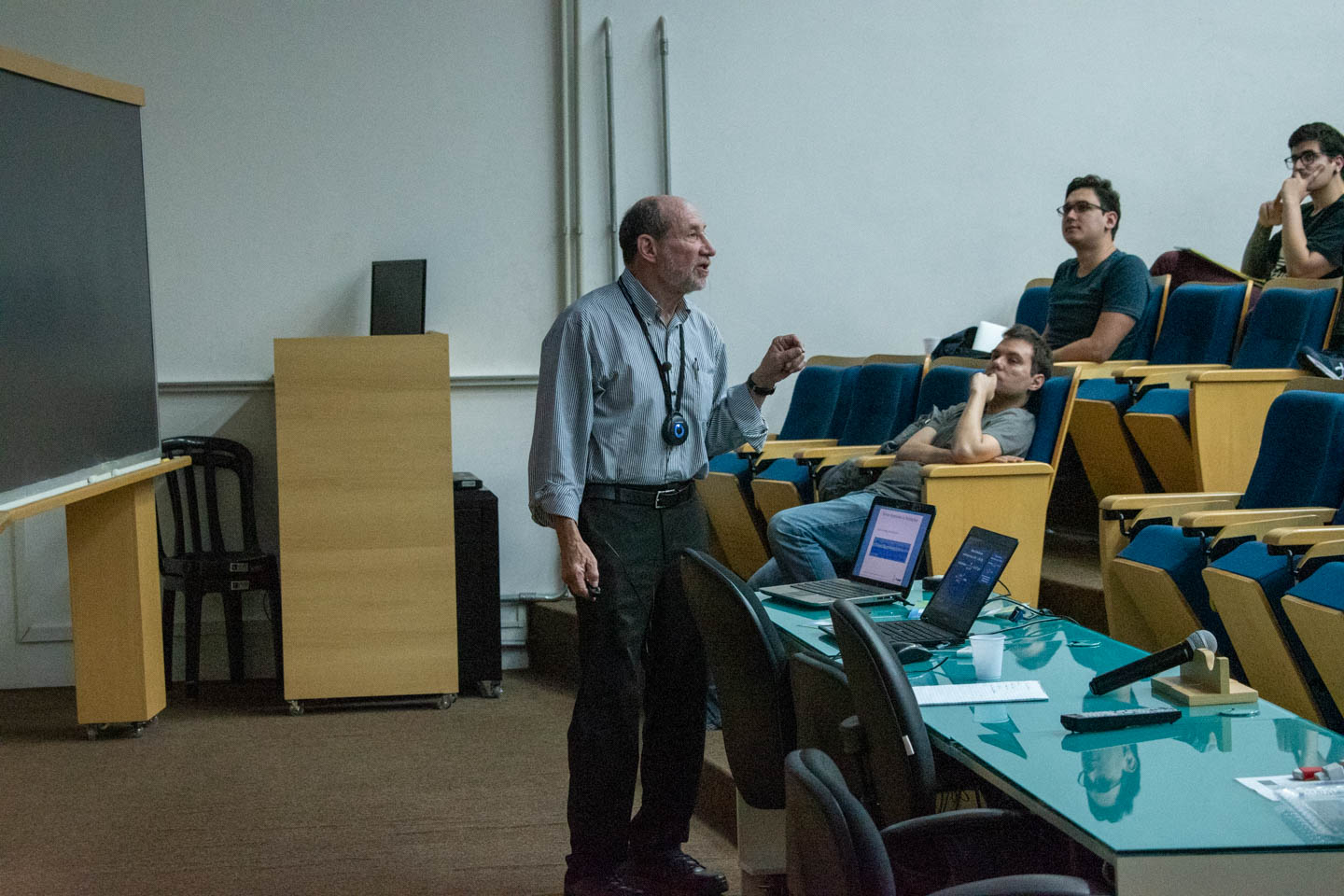
The professor gave a lecture during the “One-day Relativity Workshop”, which happened at ICTP-SAIFR in November.
Quantum mechanics and general relativity don’t really work out together. But people have been working a lot, trying to find this ‘theory of everything’, or at least trying to find a quantum description of gravity. Are physicists any closer to sorting this out? Where are they looking for clues to solve this problem?
The holy grail! Hmm… if I knew [where to look] I’d be working on it! Hahaha
So there’s been a huge effort in a number of different approaches to quantum gravity and, although I have my own biases, nothing that people have tried has had what I would call a “remarkable success”. The most popular is string theory, which had early predictions of supersymmetric particles that have not been seen. Its attempts to make predictions about ordinary physics, ordinary particles have been unsuccessful, but there was a kind of remarkable coincidence in modelling a particular class of black holes – not physical black holes, but higher dimension black holes: something called extreme black holes. But that success was many years ago and, to my mind, you can’t see a similar dramatic success coming out of that.
From the other approaches, I think some are exciting but again, it’s been something of a desert.
Theoretical physics had tremendous advances in the 60’s and 70’s with the development of gauge series, the Standard Model and the final experimental piece falling in place with the discovery of the Higgs particle. There are significant increases in our understanding of neutrinos, partly theoretical, partly experimental. But nothing like those dramatic advances [for unifying QM and GR] in theoretical physics. The dramatic advances have really been in cosmology and relativistic astrophysics, not in particle physics, in recent years.
You were here for the workshop on general relativity. Could you tell a little bit about your experience here and the importance of this kind of event for physics and physicists?
It’s always exciting to come to these things, in particular for me. I’ve been working much more in astrophysics than in quantum areas in recent years, so it gave me a chance to see and talk to people doing work on quantum field theory in curved spacetime, with implications for Hawking evaporation and the question of what happens to information in the evaporation of black holes. These are interesting questions, and it was good to see things that have been done in the last few years, that I hadn’t been aware of. That’s really useful to me.
My being here also… People here were largely working on areas like that [using quantum approaches] so I gave an overview, made the essential calculations in the field of gravitational wave astronomy accessible. I hope that’s useful for people watching, to [get to] know what has been done in the last few years.
If you are interested on neutron stars, check out these videos on Youtube!
Neutron Stars – The Most Extreme Things that are not Black Holes
Continue Reading | Comments Off on Ever wondered what it is like to study some of the Universe’s most dramatic events?
UNESP hosts School on Dark Matter for 80 Latin American Graduate students
by Marcos Jorge – Assessoria de Comunicação e Imprensa/UNESP
The Institute of Theoretical Physics hosted between June 27th and July 8th a School on Dark Matter for more than 80 students, from 17 different countries – most from Latin America. The activity was an initiative of the South American Institute for Fundamental Research (SAIFR), the regional branch of the prestigious International Center for Theoretical Physics, located in Trieste, Italy.
The organizers argue that one of the motivations to create the School is the growing interest that this topic has aroused in the recent years. “Sometimes, it is difficult for Latin American students to find in his or her institution someone who works with Dark Matter and a good the opportunity to improve the field is missed”, explains professor Eduardo Pontón, from UNESP.
Pontón explains that Dark Matter is a field that involves several areas such as cosmology, astrophysics or particle physics. “In order to assemble the best faculty, the team searched not only for experienced researchers but also for professors who were well known for their teaching abilities”, Pontón says.
Pontón, a particle physics expert, is one of the School organizers, along with Gianfranco Bertone (GRAPPA – University of Amsterdam, The Netherlands), Graciela Gelmini (UCLA-Los Angeles, USA) and Fabio Iocco, also a professor at the Institute of Theoretical Physics of UNESP.
According to professor Iocco, since the 1930s, scientists understand that there is visible matter missing in the galaxies, but it was only in the last decades that the scientific community reached a consensus that this dark matter is not part of the Standard Model of particle physics. “That is the moment when Dark Matter is no longer only an Astrophysics topic, but also an issue for the particle physics community. From that moment on, there was a big inertia to study Dark Matter and a great injection of funds”, he explains.
Iocco is an Astrophysicist that in the beginning of 2015 wrote an article entitled Evidence for dark matter in the inner Milky Way published on Nature Physics. The article proved for the first time the presence of Dark Matter in the innermost region of the Milky Way.
Continue Reading | Comments Off on UNESP hosts School on Dark Matter for 80 Latin American Graduate students
Two collaborations with British researchers will investigate dark matter
The proposals elaborated by UNESP and the Imperial College London were approved in a call published by FAPESP in the end of 2015 and will involve the fields of particle physics and astrophysics
Por Marcos Jorge – Assessoria de Comunicação e Imprensa/UNESP & Ricardo Aguiar
UNESP and the Imperial College London will collaborate on projects that will investigate dark matter from two different perspectives: particle physics and cosmology and astrophysics. The proposals were submitted on a call published by the Sao Paulo Research Agency (Fapesp) aiming to promote the engagement of local researchers with international partners.
The SPRINT (São Paulo Researchers in International Collaboration) Program provides funding for the initial phase of international research collaborations with clear expectations that the next phase brings a presentation, by the researchers from the State of São Paulo, of research proposals in the regular funding lines of FAPESP aiming to continue the research started under SPRINT and consequently the consolidation of the partnership.
One of the granted researchers is Fabio Iocco, from UNESP’s Institute of Theoretical Physics. He will partner with professor Roberto Trotta on a project that will apply Bayesian statistics to the data already collected in order to understand the distribution of the dark matter in the Milk Way.
In 2015, Iocco published an article on Nature Physics where his team demonstrated the existence of dark matter in the inner Galaxy, but without making any assumption about its distribution.
Particle Physics
The second project, coordinated by professor Sergio Novaes, involves the São Paulo Research and Analysis Center (SPRACE), located in the campus of Sao Paulo. The SPRACE project was implemented in 2003 to provide the necessary means for the participation of high energy physics researchers from the State of São Paulo in particle acceleration such as the Tevatron, at Fermilab, and the Large Hadron Collider, at CERN.
The collaboration with professor Oliver Buchmuleler, from the Imperial College London, is part of the Compact Muon Solenoid (CMS) experiment, one of two large general-purpose particle physics detectors built on the Large Hadron Collider (LHC).
The team will use the LHC structure to seek for the first non-cosmologic evidences of the dark matter, to see if it is really made up of subatomic particles. To this date, all the particles we know are found in the Standard Model, but none of the theories can explain dark matter. The experiments will look for new particles that may be responsible for formation of dark matter.
E-mails:
Fabio Iocco: iocco@ift.unesp.br
Sergio Novaes: sergio.novaes@cern.ch
Continue Reading | Comments Off on Two collaborations with British researchers will investigate dark matter
Physics and philosophy
Rogério Rosenfeld took part in debates with Antonio Cicero on the 5th Art and Science edition, and discussed what we currently know and don’t know about the universe
Over the last few weeks, Rogério Rosenfeld, current director of IFT/Unesp and vice-director of ICTP-SAIFR, took part in a series of debates to talk about science and his area – from the microscopic world of Particle Physics to the macroscopic one of galaxies and the universe. The events were part of the 5th Art and Science edition, which brings together professionals from different areas for a series of lectures and discussions in cities throughout Brazil.
Click here to watch one of Rogério Rosenfeld’s talks on the 5th Art and Science edition.
“I enjoyed being part of this initiative because I had the opportunity to talk about science and about my area for the general public, and I think science communication is essential”, says Rogério.
Of the four debates Rogério participated in, three were with the philosopher Antonio Cicero. The theme of these events was the universe: how is the dialogue today between physics and philosophy when it comes to its origin and its mysteries, as dark matter and dark energy?
What we know that we know
In his lectures, Rogério first talked about “what we know that we know” about the universe. At the microscopic extreme, we learned over the centuries that matter is consisted of atoms, that they are divisible into electrons and the nucleus, and that the nucleus is made of neutrons and protons. With scientific and technological advances, we discovered that even these particles could be broken down into quarks. And so the Standard Model was created – a kind of periodic table of the elementary particles of nature. The last major discovery in the area was the detection of the Higgs boson at the LHC in 2012, which completed the model.
In the macroscopic end, we know the age of the universe – 13.7 billion years – we know that it is not static – it’s expanding – and in 1998 we found out that, contrary to what everyone thought, the expansion is accelerating. We also know that the universe is composed of only about 5% of matter as we know it – 24% is dark matter and 71% is dark energy.
What we know that we don’t know
Then Rogerio talked about “what we know that we don’t know”.
“There’s a lot we don’t know about the universe, but at least we know that we don’t know, which is very important,” said Rogério.
An example is the existence of particles beyond the Standard Model – there is the possibility that there are particles in the universe which we couldn’t observe until today. We also know that we don’t know what is dark matter made of and what is dark energy, responsible for the mysterious accelerating expansion of the universe.
“I just didn’t talk about what we don’t know that we don’t know because… I don’t know it”, said the researcher.
Debate
In his talk, Antonio Cicero spoke mainly about the Ápeiron. The word of Greek origin, that means “unlimited, infinite,” refers to the central idea of a cosmological theory created by Anaximander in the sixth century BC. According to it, the ultimate reality, called arché, is eternal and infinite and is not subjected to age or disintegration.
Rogerio provoked Antonio Cicero saying that, in physics, the infinite doesn’t exist.
“How many grains of sand are there on a beach? How many atoms on the planet? A lot, but not infinite. When, in a theory, we find an “infinite”, we know that there is a problem with it”.
The debate was followed by questions from the audience and, at the end, Rogério and Cícero agreed that, despite the fact that philosophy and physics had the same origin, today the areas are quite different.
Click here for more information on the Art and Science events.
Continue Reading | Comments Off on Physics and philosophy
Complex networks and neuroscience
Throughout the School on Complex Networks and Neuroscience, held at ICTP-SAIFR from September 28th to October 16th, Claudio Mirasso, from the Universitat de les Illes Balears, in Spain, talked about the relation between complex networks and brain research. The physicist, who was also one of the event’s organizers, pointed out how, on one hand, ideas from physics can help us understand neuroscience and, on the other, the way the brain functions may contribute to research in physics.
Brain Functioning
One of Mirasso’s interests is understanding the synchronization between different brain regions.
“In electroencephalography (EEG) studies we see that different brain regions, often not structurally connected, are synchronized”, he says. “Through studies with complex networks, we try to understand this synchronization and the exchange of information between different brain areas”.
One of the reasons for the synchronizations, according to the researcher, is that regions have similar or complementary roles. When we see an object, for instance, information about its shape, color and position in space are sent to the brain, and different areas are activated to process this set of data.
“Among our most recent results, we found that the thalamus is one of the main areas responsible for coordinating this synchrony”, said Mirasso.
Information Processing
If complex networks help us understand how the brain works, the opposite can also happen – especially when it comes to processing information.
“We are living in the era of information”, says Mirasso. “The amount of data we have increases every day, so we need new ways to process all this information”.
One way to make this processing more efficient is to previously sort only the data of interest. This is the technique used by the brain: every second we are bombarded with thousands of visual, sensory and auditory stimuli. However, just relevant information is processed.
“Studying how the brain filters and processes information and trying to copy it can help us create more efficient ways to process data on computers,” says Mirasso.
The brain can also contribute to improve facial and voice recognition engines. Although computers are more efficient than humans when calculating, for example, we are much better when it comes to differentiating faces and voices. Research about what makes our brains specialists in these tasks is a way to improve computer systems that try to distinguish different faces and sounds.
Continue Reading | Comments Off on Complex networks and neuroscience
Colloquium discusses complex networks and evolution
In last Wednesday’s colloquium, researcher Roberto Andrade, from the Universidade Federal da Bahia, talked about his latest works involving complex networks for the study of evolution. Andrade and his group propose a new method for organizing species and their evolution, traditionally done through phylogenetic trees based on morphology and molecular characteristics.
“Our proposal is to classify organisms based on similarities of components involved in the synthesis of basic molecules”, says Andrade. “In our work, we studied fungi based on chitin. Then, in a more ambitious project, we studied the evolutionary origins of the mitochondria”.
The researcher explains that many organisms have their own set of enzymes to obtain a molecule that is found in many different species. Therefore, by studying differences between cell machinery, it’s possible to classify organisms by their genetic proximity.
This situation happens, for instance, with chitin – a molecule that is the main component of fungal cell wall. Different species, however, obtain chitin through different processes. Andrade and his group used the NCBI (National Center for Biotechnology Information) database to compare the molecular mechanisms of various species.
“The classification we reached coincided 100% with other phylogenetic trees”, says Andrade. “However, the method we used to obtain the final classification is faster”.
Origins of the mitochondria
“After this work, we got more ambitious”, says Andrade. “We started working on a project to discover the evolutionary origins of the mitochondria”.
Although many theories attempt to explain the evolution of the mitochondria, the issue still intrigues scientists. For those unfamiliar with biology, mitochondria is an organelle that has its own DNA. Some hypothesis, such as Endosymbiotic Theory, proposes that mitochondria originated when a prokaryotic organism (which has no cell nucleus) started living in symbiosis with a eukaryotic cell (which has cell nucleus).
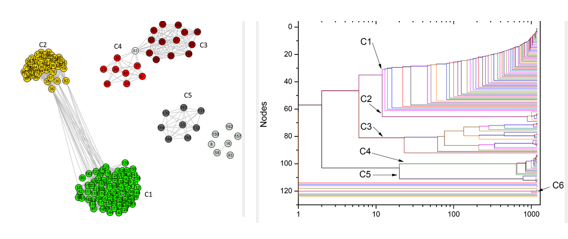
In the left, complex networks shows the proximity of different groups; in the right, the resulting phylogenetic tree
This time, the study was based on the ATP synthesis process – this molecule is considered a cellular fuel, since cells obtain energy by breaking it. Andrade and his group compared the molecular structures that lead to ATP synthesis in bacteria and in mitochondria, to find out which bacteria were most genetically close to the organelle.
“Our main result was that Rickettsiales bacteria are not closely related to mitochondria”, says Andrade. “The work indicated that Rhodobacterales, Rhizobiales and Rhodospirillales are groups closer to the organelle”.
The work was published this year in PLOS and can be found here.
Continue Reading | Comments Off on Colloquium discusses complex networks and evolution
Studying evolution and cooperation with Game Theory and Complex Networks
In the second week of the School on Complex Networks and Neuroscience, the lectures of Jesús Gómez-Gardeñes discussed how Game Theory ideas can help in studies of biology and evolution. His research focus especially on the mechanisms related to cooperation and imitation behavior in human populations.
Game Theory
Game Theory ideas have applications in several areas, from economics to biology. The main purpose of the area is to find the best strategy, or alternative, when we face a problem in nature or society.
“With Game Theory we can “mathematize” conflicts and dilemmas, which allows us to calculate the best solution for them”, says Gardeñes.
A classic example of the area is the “Prisoner’s Dilemma”.
One way to solve problems like this one is to calculate the Nash Equilibrium for the situation – the result will show what strategy is the best one. In the Prisoner’s Dilemma case, telling on your friend is the best option.
Evolution
Game Theory can be applied in studies of biology and evolution. One of the first works in the area, “The logic of animal conflict,” was written by John Maynard Smith and George Price in 1973 and published in Nature. In the article, the researchers imagine a situation where two species, like hawks and doves, compete for the same resource.
In this simplified case, imagine that when a dove competes with another dove for food, they share the resource. When a hawk competes with a dove, the hawk gets the resource. And when two hawks compete for food, they will fight – their final result will be the resource minus the damage they take in the conflict. So, what species would be favored by evolution?
“Game Theory can show how different strategies adopted by different species have different success rates”, explains Gardeñes. “So the process of natural selection will favor animals that adopt the strategy that provides the best results”.
In the example between hawks and doves, if the damage caused by the conflict between hawks is large, the dynamic tends toward an equilibrium, suggesting that the two species can coexist. When there are many hawks, the chances of two animals of this species meeting and fighting is high, favoring doves. When there are many doves, hawks are favored as they will have a good chance of winning the resource. In Game Theory, hawks and doves can represent different types of animals or different types of behavior of individuals of the same species.
Cooperation
According to Game Theory ideas, in most situations cooperation is not a strategy that would succeed in nature. Therefore, several studies try to understand how cooperation emerged, evolved and managed to survive in a great variety of communities. Some hypotheses say that this strategy favors the preservation of genes, as there is the possibility of increasing the chances of survival of your family members if you cooperate with them. In other communities, individuals that don’t cooperate might be punished.
“In my research, I try to understand cooperation in human populations”, says Gardeñes. “Through studies of complex networks, we can better understand how people relate to each other”.
Gardeñes points out that humans are different from animals, as they can change strategy at any time. While a dove can’t choose to behave like a hawk, we can change our behavior. One of the reasons that make us change our strategy is by observation: when we see someone else adopt a different strategy from our own and be successful, we can choose to imitate him.
“My work also aims to understand the mechanisms of imitation strategies in humans,” says Gardeñes. “Our objective is to create simulations that are as close to reality as possible. One of the ways of doing this is to add multiple networks to the system: related to work, friendships, family and so on”.
Continue Reading | Comments Off on Studying evolution and cooperation with Game Theory and Complex Networks
Colloquium discusses black holes, outflows and their influence on galaxies
In last Wednesday’s colloquium, ICTP-SAIFR welcomed Rodrigo Nemmen, from the Institute of Astronomy, Geophysics and Atmospheric Sciences (IAG) of USP. The researcher presented some of his latest works with black holes, focusing on some open questions of the area. Among them were featured the impact of black holes in galaxies, the relation between mass and energy behavior and the production of gas outflows discharged by them.
Star formation
Black holes concentrate a large amount of matter in a small region of space. When compared to the Sun’s mass, these astronomical bodies can be from tens to millions of times greater – in the latter case, they are called supermassive. While there are millions of “smaller” black holes scattered throughout a galaxy, there is a supermassive black hole at the center of each one.
Although the mass of a supermassive black hole is huge, its gravitational effect is extremely small – the area in which it can have an effect is approximately one million times smaller than the size of the galaxy. However, studies conducted in the late 90s proved that there is a relation between the mass of these bodies and at least the central region of galaxies, called the bulge. So how can a black hole affect regions beyond the reach of its gravitational effect?
“The influence of black holes in galaxies is indirect,” says Nemmen. “In fact, it is the gas outflows that influence the formation of stars”.
Nemmen explains that some black holes “swallow” gas around them and also expel a much larger quantity and with great force. These outflows heat space as they travel and can reach hundreds of thousands of light years when produced by supermassive black holes. As star formation depends on gas cooling, the outflows interrupt the process and leave galaxies with fewer stars when compared to others where black holes don’t emit outflows.
Outflows
The explanation of how black holes influence in the formation of galaxies raises other questions: how are outflows produced and what is their energy source?
“There is a kind of outflow that has the form of “rays” of particles and that reach speeds very close to the speed of light”, says Nemmen. “These jets are produced when a strong magnetic field interacts with the black hole and force gas to be expelled”.
The magnetic field is also one of the factors responsible for the intensity of the jets. Another important factor, which causes the amount of emitted gas to be greater than the “swallowed” gas, is the rotational speed of the black hole.
“The spin can make the “efficiency” of the black hole to be greater than 100%, sometimes reaching up to 300%,” says Nemmen. “To power the outflows, the rotational speed decreases over time”.
The origin of the magnetic fields that lead to the production of the jets, however, is a question that still remains unanswered.
Energy behavior
Another question that intrigues Nemmen is related to the behavior of black holes: is there a relation between mass and energy returned to the environment? In a phenomenological study conducted with his collaborators, published in Science, the researcher came to an unexpected result.
“We found that, regardless of its size, black holes have the same behavior in terms of energy returned to the environment”, he says. “In the same study, we found that about 10% of the energy of all gas outflows is transformed into radiation”.
Continue Reading | Comments Off on Colloquium discusses black holes, outflows and their influence on galaxies
XXXVI Encontro Nacional de Física de Partículas e Campos
With researchers from ICTP-SAIFR and from other countries, the event discussed Cosmology, Gravitation and the Standard Model
Last week, the XXXVI Encontro Nacional de Física de Partículas e Campos was held in Caxambu, Minas Gerais. Among the main topics discussed were Cosmology, Gravitation and High Energy Physics. Coordinated by Nelson Braga, from UFRJ, the lectures of the event were for the first time divided by themes, instead of the traditional division by areas.
“Having the lectures in a new format was an excellent idea”, said Rogério Rosenfeld, from IFT/UNESP and ICTP-SAIFR, who helped organizing the event.
The meeting was attended by international researchers, as Alexei Starobinsky (Landau Institute for Theoretical Physics, Moscow, Russia), who spoke about inflation models, and Alessandro Strumia (University of Pisa, Italy), who discussed ideas on the Standard Model.
ICTP-SAIFR researchers also attented the event. Nathan Berkovits, director of the institute, spoke about Superstring Theory, and Fabio Iocco discussed his studies on Dark Matter. Also, post-docs Nicolás Bernal and Alberto Tonero presented their work.
Is nature natural?
In one of the event’s talks, entitled “Is nature natural?”, Strumia provoked and discussed ideas related to the Standard Model and to the theories that attempt to go beyond it, such as Supersymmetry. Strumia continued the discussion in a lecture held at the ICTP-SAIFR on Monday.
“Supersymmetry, a theory considered “natural”, is being sought for decades, but no experiment could confirm it so far”, said the researcher. “But the Standard Model, often considered “unnatural”, continues to be proven. So is nature really “natural”?
Theories beyond the Standard Model attempt to explain phenomena that is not yet understood by science, such as dark matter. When questioned on this topic, Strumia said the solution is perhaps to add a new particle to the model, without the need of other theories.
“In my opinion, if we confirm that there are no theories beyond the Standard Model, the physics of this area may become even more interesting than otherwise”.
Continue Reading | Comments Off on XXXVI Encontro Nacional de Física de Partículas e Campos
ICTP-SAIFR colloquium discusses Quantum Spin Liquids
Last Wednesday, the traditional colloquium held at ICTP-SAIFR addressed the topic of “quantum spin liquids”. Rodrigo Pereira, from the University of São Paulo (USP-São Carlos), spoke about this state of matter that arises when Mott insulators are subjected to low temperatures. Under these conditions, unlike band insulators, it’s possible to modify the spin of its electrons, making their magnetic properties more interesting.
Among the key features of “quantum spin liquids” are the facts that there is no magnetic order of spins – the same way there is a certain disorder of particles in the liquid state of matter when compared to solids – and there is rotational symmetry of spins. Although the existence of a material that could behave as a “quantum spin liquid” has not yet been discovered, there are some possible candidates. In case one of them is confirmed, it would be possible to obtain a superconducting material by altering electron density and inducing a phase transition from the “quantum spin liquid” to the superconductor.
“The area of ’quantum spin liquids’ is interesting because it presents theoretical challenges, but also have experimental motivations”, says Pereira.
First proposed in 1973 by American physicist Philip Warren Anderson, the “quantum spin liquid” was at the time a purely theoretical state. In the following decades, with the motivation of studying new states of matter and the growing interest in superconductors, scientists began to wonder whether it was possible to study “quantum spin liquids” in more dimensions, and if this material could actually exist.
“The main motivation for studying ‘quantum spin liquids’, from a theoretical point of view, is that such a material would present exotic properties that wouldn’t fit into current classifications of states of matter, what would open possibilities for new theories”, says Pereira. “Quantum spin liquids may also make an interesting connection between the areas of Condensed Matter and High Energy Physics”.
One of the main candidates to prove the existence of the “quantum spin liquid” state is the herbertsmithite. This mineral was discovered in 1972, in Chile. In 2012, a synthesized form showed some characteristics of “quantum spin liquids”, and studies are still underway to confirm the phenomenon.
The experimental reasons to study “quantum spin liquids” are related to the possibility of the material acting as a superconductor in more natural temperatures. As the materials used today as superconductors require an extremely low temperature to not have electrical resistance, a superconducting material that could work in higher temperatures, among other applications, could lead to large savings in energy transportation.
Continue Reading | Comments Off on ICTP-SAIFR colloquium discusses Quantum Spin Liquids
